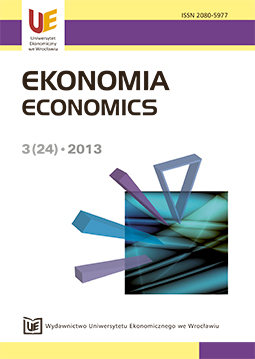Popyt mieszkaniowy a przestrzeń miejska – przegląd literatury
Housing demand and urban transformations – literature review
Author(s): Bartłomiej Marona, Michał GłuszakSubject(s): Economy
Published by: Wydawnictwo Uniwersytetu Ekonomicznego we Wrocławiu
Keywords: housing; demand; urban structure
Summary/Abstract: The article discusses housing demand. We focus on disequilibrium of a urban housing market and location derived segmentation. Based on literature review, we identify reasons behind housing mobility and housing location choice at household level. In the second part of the article we focus on the interaction between housing demand of urban development patterns (especially spatial aspects of it). The main objective of this paper is to show the relationship between two major dimensions of individual housing demand: (i) mobility choice and (ii) location choice and spatial transformations within the metropolitan area. The article is a critical analysis of the literature. We attempt to identify the main factors affecting the demand for housing in a specific metropolitan area. Previous studies point to a number of factors affecting the residential mobility of households. The most important are: the life cycle, relative deprivation, social capital, gender and economic situation. Studies show that these factors are correlated and are subject to mutual interactions. Reflections on diversity and segmentation of metropolitan housing markets lead to the conclusion that the local housing market can be seen as a nested structure. Each metropolitan housing market is divided into submarkets − based on location and housing services quality. The housing search is therefore sequential and hierarchical in nature. Among the most important factors determining the household choice of location within the local housing market are: economic capital, social status, spatial relationships, lifestyle, racial segregation and the quality of schools. The synthesis of the results leads to the conclusion that the demand for housing is related to certain spatial phenomena occurring in metropolitan areas. We highlight four aspects in particular:– – communication system (mass transit, road system, parking in the city center), – spatial order, – access to schools and public services (excessive density of housing and inadequate social infrastructure), – urban sprawl. Due to the information asymmetry and inelastic supply in housing market subsegments it can cause persistent imbalances and emergence of deprived areas within the urban structure.
Journal: Ekonomia
- Issue Year: 2013
- Issue No: 24
- Page Range: 119-133
- Page Count: 15
- Language: Polish

